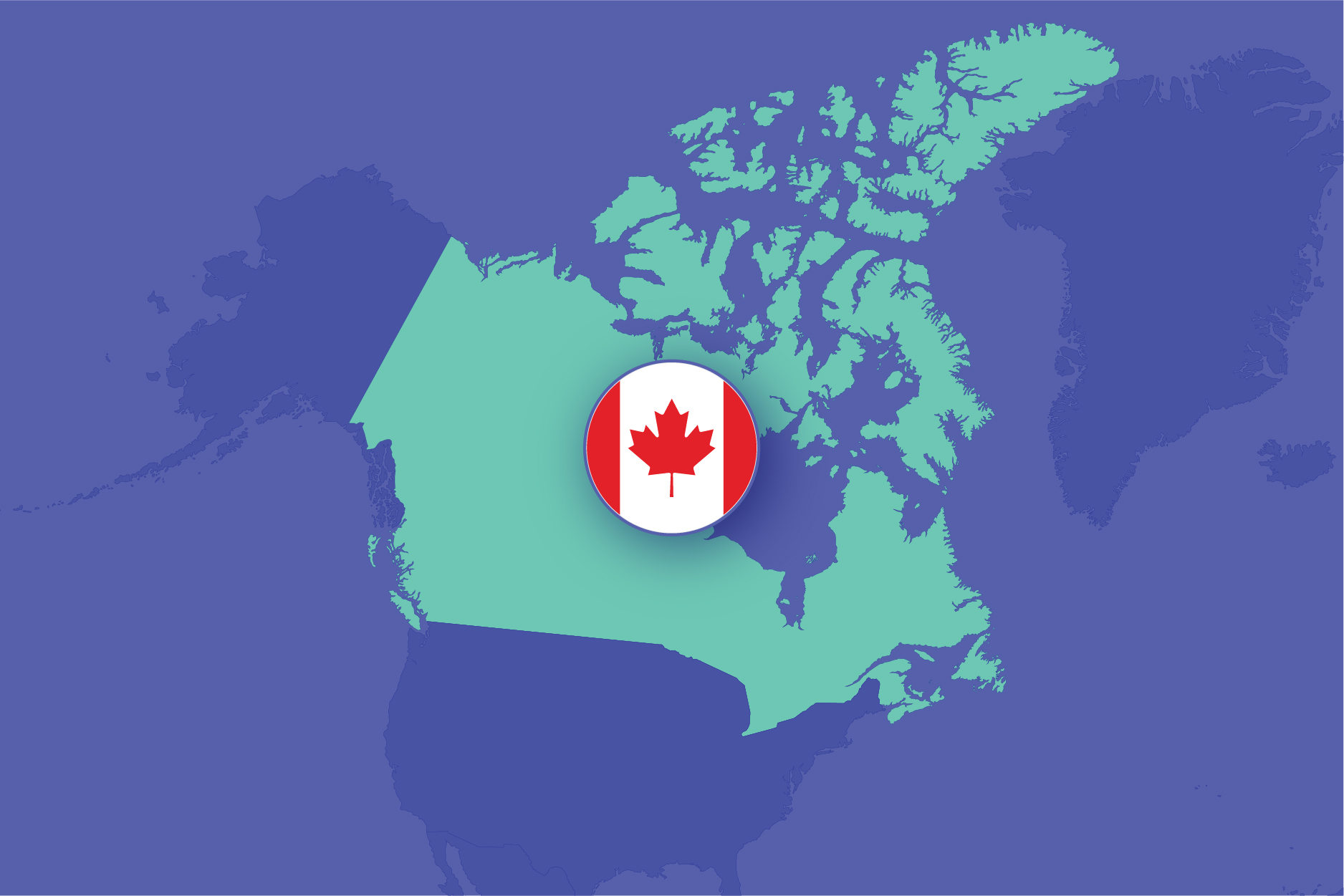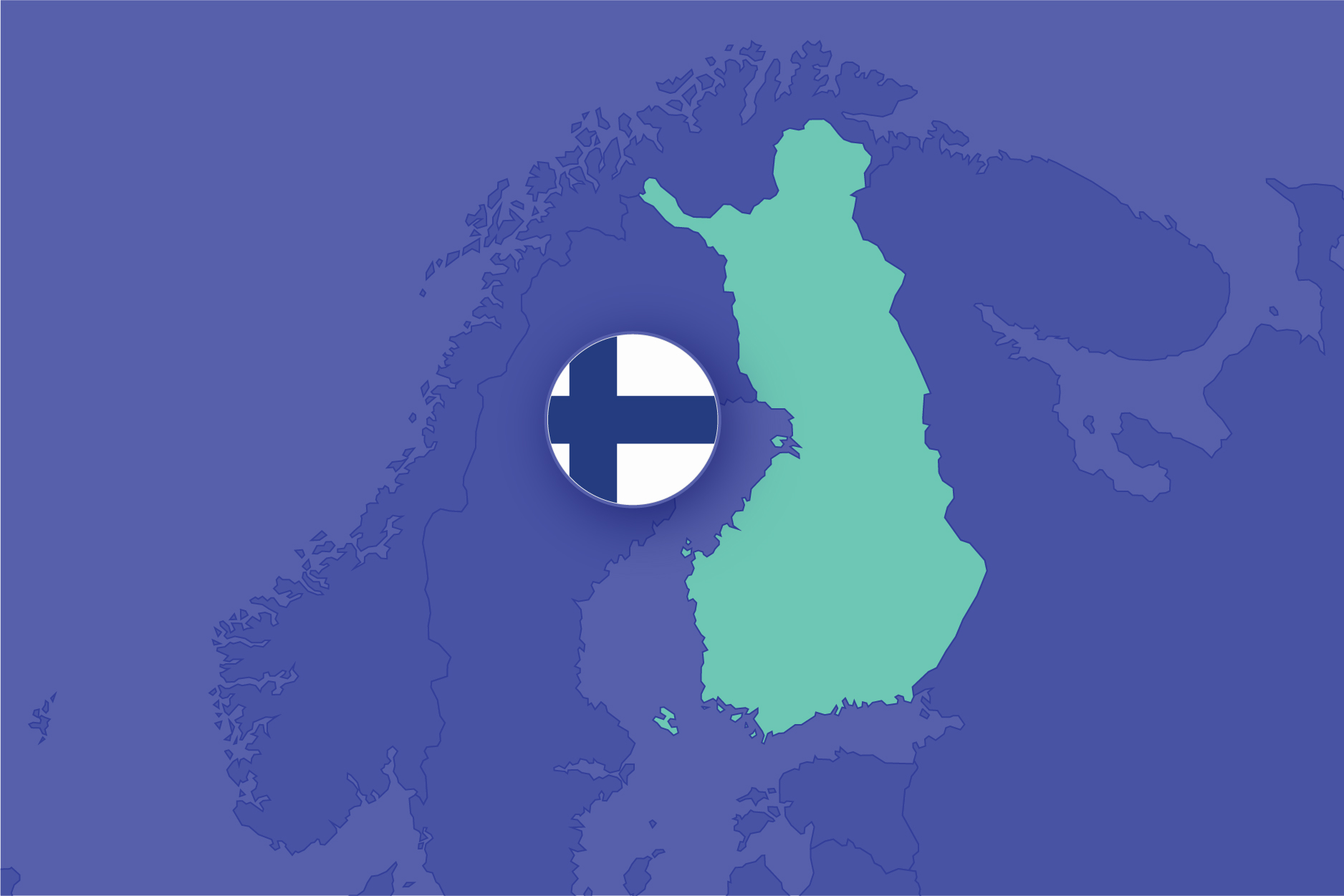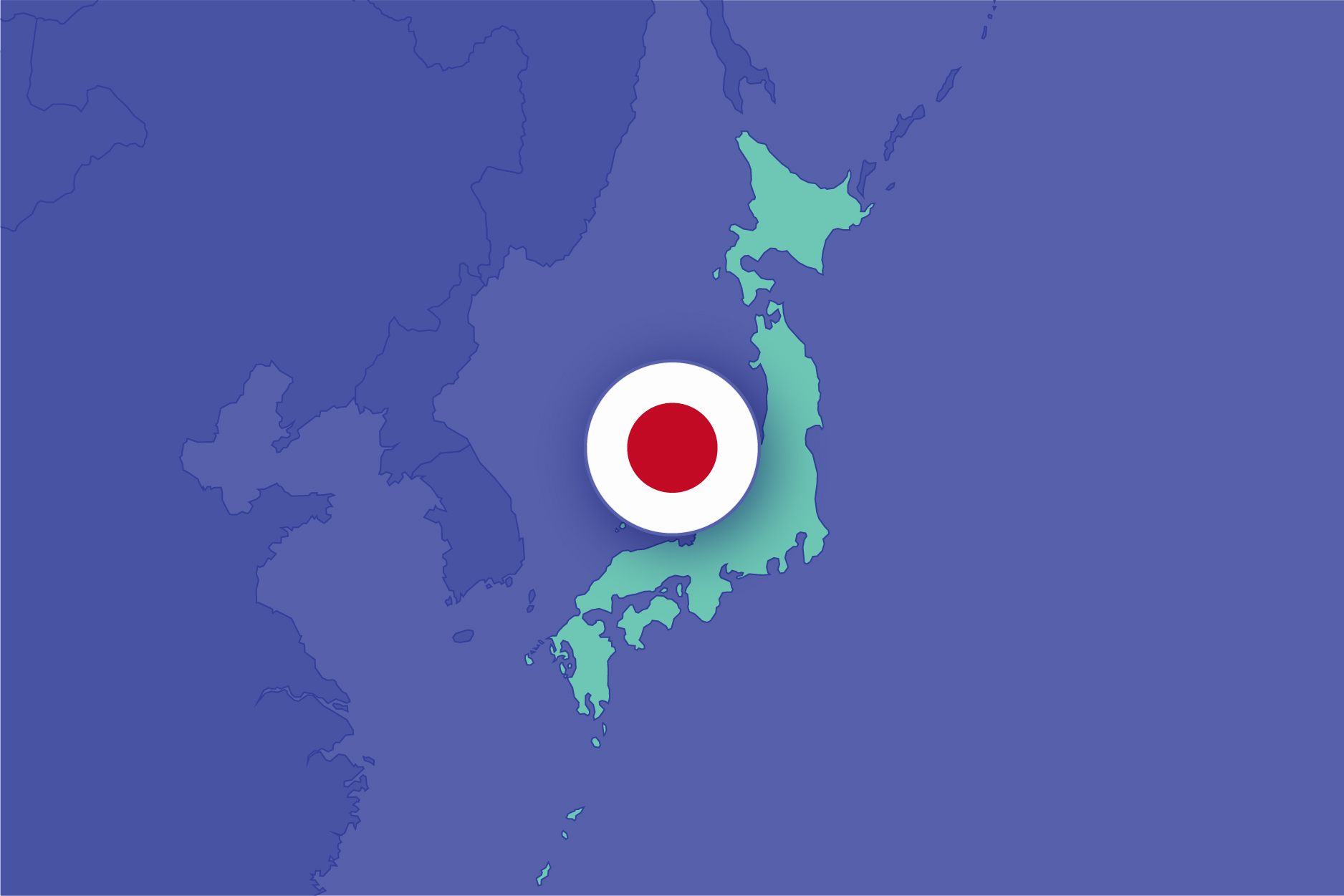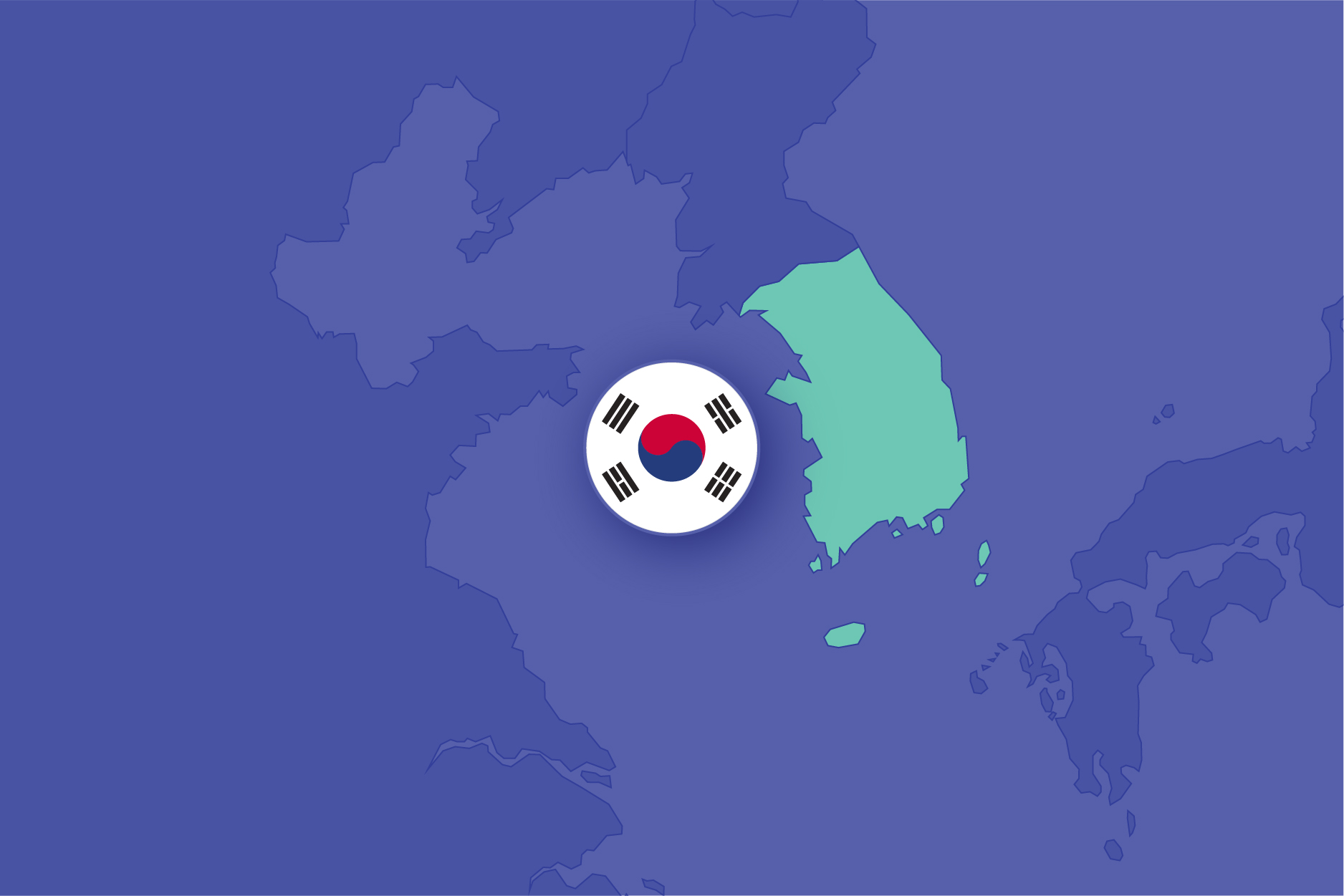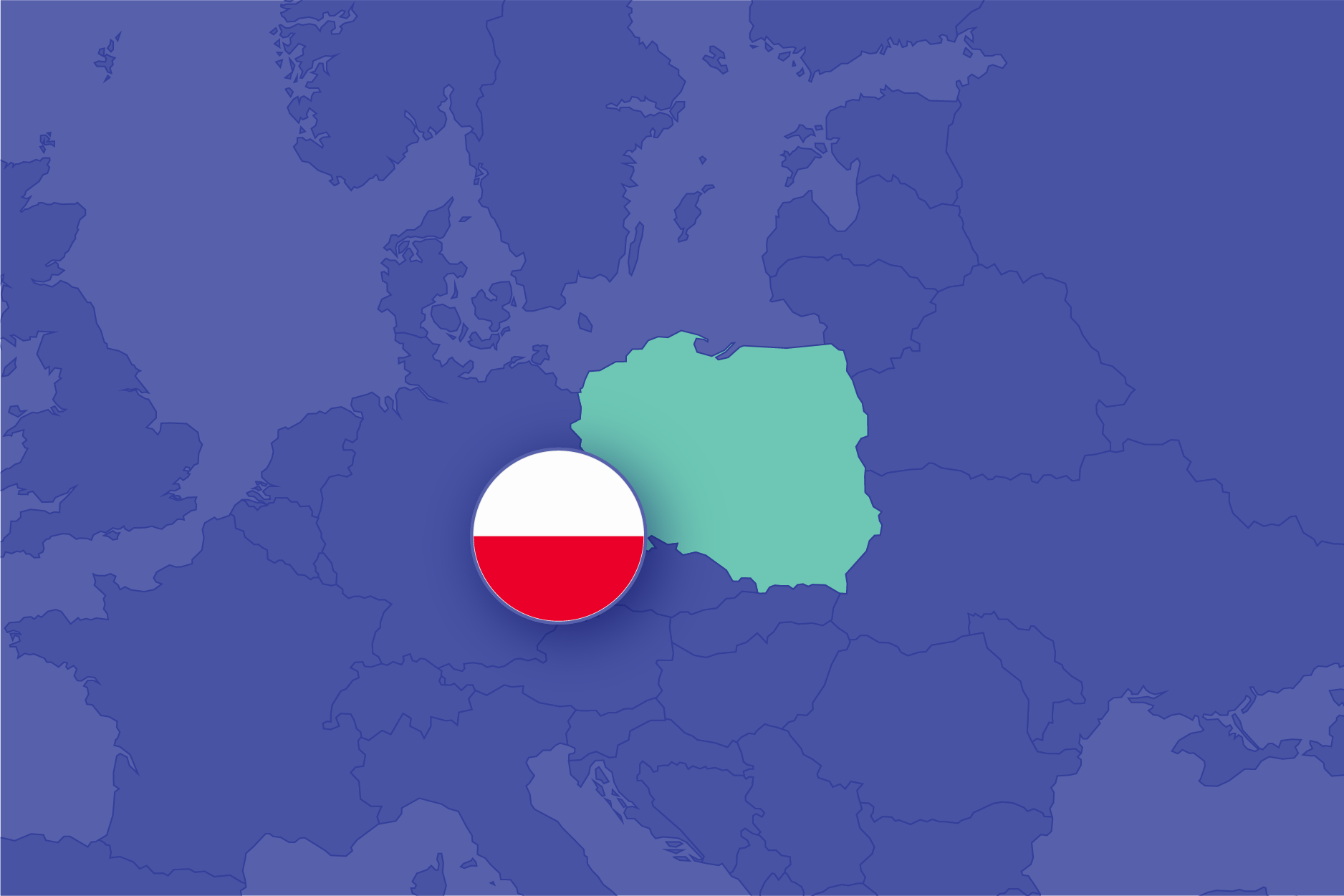Estonia
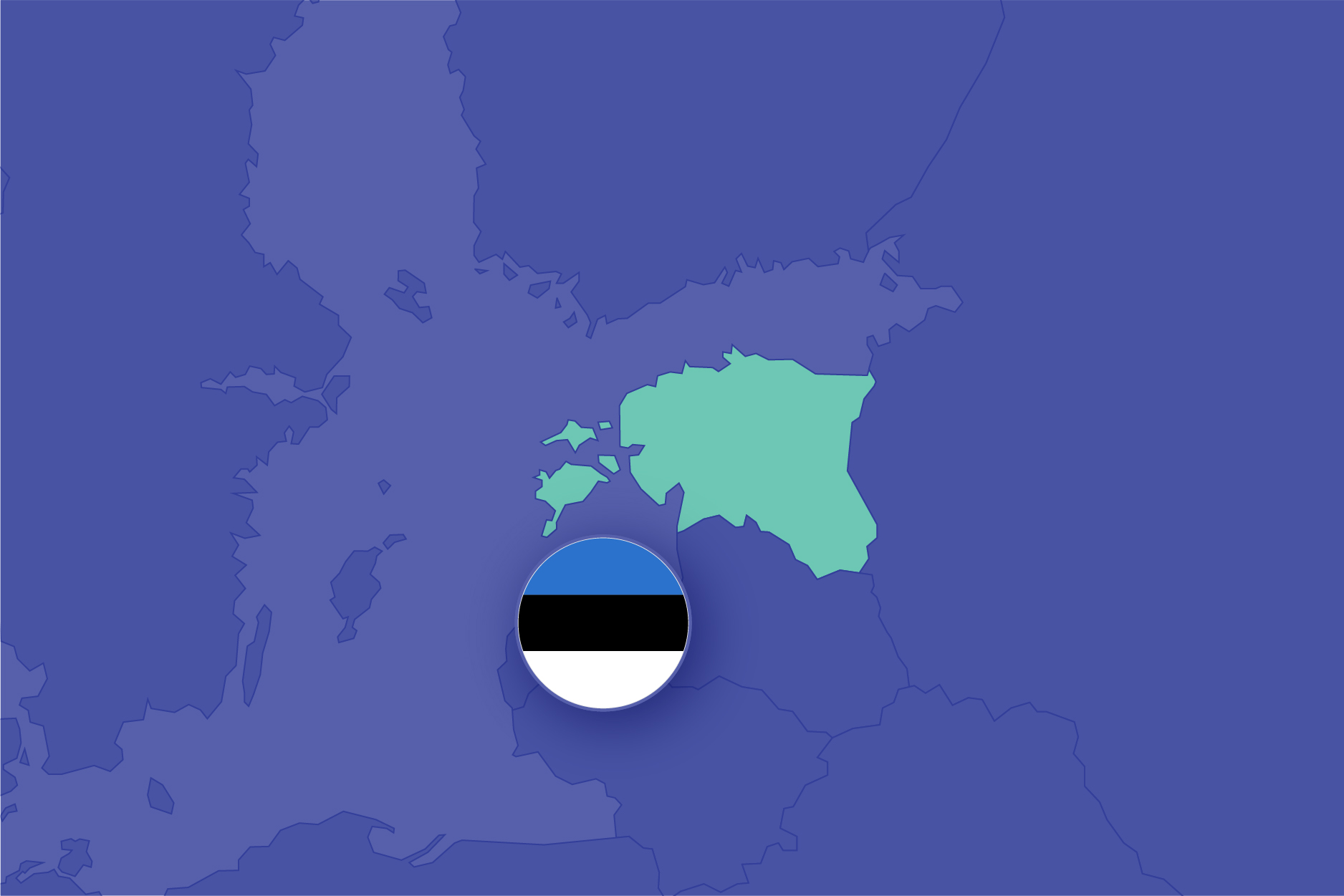
Context
Estonia emerged as a top performer on PISA 2012, ranking in the top tier in science and close to the top in reading and mathematics among all participating countries and regions. By 2018, Estonia had become a top performer globally in all three subjects and the highest performer in Europe. In addition, Estonian performance is relatively equitable with respect to socioeconomic background. Among OECD nations, Estonia has the highest percentage of resilient students, defined as those in the lowest quartile of socioeconomic status who perform in the highest quartile on PISA within their own country. The share of low-performing Estonian students in reading on PISA 2018 was less than half the OECD average.
PISA 2022 Mean Scores
This is a remarkable achievement for a country of just over one million citizens that gained independence only in 1991. Since that year, the Estonian economy has grown nearly eightfold, with its information technology sector central to that growth. Estonia deliberately created an education system equipped to support the high-tech, high-skill, high-wage economy it was focused on building. As part of this national strategy to create an information society, it created the Tiger Leap project to provide all schools with computers and Internet access. The ProgeTiger program, launched in 2012, built on Tiger Leap by providing schools with instructional resources and professional learning opportunities around digital literacy. The ProgeTiger program continues today and is focused on building skills in three areas: design and technology; engineering sciences; and information and communication technologies.
In addition to its focus on technology, Estonia steadily built a new education system following independence from the Soviet Union. Key education reforms in Estonia have included development of a new national curriculum and ongoing adaptation of that curriculum to the needs of a new economy; revamped teacher education to incorporate innovative practices, provide mentorships, and require a master’s degree; guaranteed all children access to early childhood programs; and strengthened vocational education and training.
In 2014, Estonia adopted the Lifelong Learning Strategy 2020 to guide education reforms for preschool, primary and secondary education, higher education, and adult learning. The strategy called for a focus on the acquisition of learning skills and creativity; developing competent and motivated teachers and school leaders; creating lifelong learning opportunities matched to the needs of the labor market; and ensuring a digital focus and equal opportunities to participate in lifelong learning. A new education strategy for 2021-2035 has been adopted to guide the next period and is part of a larger national plan known as Estonia 2035: A Smart and Active Estonia plan which focuses on broad goals of citizen health, preparedness for change ,and fostering a positive relationship with the environment.
Estonia’s education system still faces challenges. As its teaching force ages, the country is struggling to recruit new teachers. Teacher salaries have risen in recent years, but they still lag behind those of other professionals in Estonia. Estonia also faces an achievement gap between its Estonian-language and Russian-language speaking students. About 14 percent of basic schools, which provide primary and lower secondary education in Estonia, use Russian as the language of instruction, and these students perform below their Estonian-speaking peers on PISA and national examinations. More than a quarter of households in Estonia are Russian-speaking. In 2022, Estonia shifted its strategy and will now require Estonian to be the language of instruction of all schools. The goal is to ensure that all students are equipped for further education and for good jobs, which generally require fluency in Estonian. The shift will require a multi-year effort to develop more Estonian teachers for Russian-speaking areas of the country and will be phased in over a period of years. The country also recently announced it will extend compulsory schooling to age 18 to ensure that all students are well-prepared for further education and the workplace.
Quick Facts
Governance
Governance Structure
Estonia’s Ministry of Education and Research oversees all education, including preschool, primary and secondary education, higher education, and adult education. The Ministry sets national standards and curriculum as well as requirements for education funding and quality assessment. The Ministry established seven national nonprofit foundations to support implementation of its policies. These include the Innove Foundation, responsible for specific tasks within general and vocational education, such as administering national assessments, and the Information Technology Foundation for Estonia (HITSA), which promotes the development and use of technology skills in education. In 2020, these seven foundations were consolidated under the Education and Youth Authority.
Each of Estonia’s 15 counties has a municipal education office that oversees over 560 schools across the country. These offices are responsible for managing school operations, including selecting school leaders and providing support for extracurricular activities and other school services. In some cases, municipalities have come together to share resources, such as teachers, services, or extracurricular facilities. Schools have a high level of autonomy for resource allocation and staffing.
While most schools are still managed by municipalities, a 2013 law mandated that the central government assume responsibility for all upper secondary schools, including academic, vocational, and special education schools. The goal of this reform was to ensure quality and consistency across secondary schools, as well as to consolidate small schools scattered across municipalities into larger, regional ones. By 2023, each of Estonia’s 15 counties will have one upper secondary school managed by the central government.
Planning and Goal Setting
The Estonian government prepares periodic national development plans as well as implementation plans for each sector, including education. The planning process includes multiple opportunities for input from educators, students, parents, and employers, as well as from the general public. Estonia shifted from sector-based plans to a government-wide strategy with its more recent strategic plan. Estonia 2035: A Smart and Active Estonia, adopted in 2021 involved two years of consultations with stakeholders and agencies across the government starting in 2018. Expert workgroups were formed in three areas: values and responsibility; welfare and cohesion; and competitiveness. The Education Ministry developed its own 2021-24 strategy to implement the education-related aims which focus on: closing gaps in student learning, reducing teacher workload, supporting student and teacher mental health, enhancing digital skills and focus on sustainability, and supporting research in all of these areas. Estonia’s comprehensive online database for the education sector, the Estonian Education Information System, allows the government to track progress.
Estonia also has a long history of collaborating with and learning from other high-performing education systems, particularly neighboring Finland. For example, Estonia’s decision in 1996 to give schools more flexibility in curriculum development was modeled on similar reforms in Finland. In 2018, Estonia and Finland formally agreed to strengthen collaboration around education, including strategies to support teaching and learning of the Estonian and Finnish languages. Estonia’s Parliament has also established a Foresight Center, which researches trends that impact government policies, including the education system.
Education Finance
Estonia has a per-pupil education funding system drawing on both national and municipal revenues. The central government provides more than 80 percent of total funding for primary and secondary education to municipal governments. Schools are operated by the state (common for vocational education), municipalities (common for general education) and private providers. All are funded similarly.
Estonia first implemented its education funding formula in 1998 and most recently amended it in 2012. The funding formula includes a block grant and an equalization grant, which is intended to ensure that all students have equal access to education. The block grant is allocated on a per-pupil basis, adjusted for the demographic and socioeconomic background of the municipality, and includes additional weights for students with special educational needs in mainstream and special schools. The equalization grant is intended to make up any shortfall between what a municipality collects in taxes and the amount needed to provide basic services, including education. Municipalities have flexibility in how they spend these additional funds.
The national government also provides additional resources to all students, regardless of income level, such as providing hot school lunches, books, and learning materials. These are funded through separate grants.
Accountability
School Accountability
Estonia does not conduct regular, comprehensive external inspections for all schools. Although the national government conducted school inspections in the 1990s, a legacy of the Soviet system, the practice was abolished in 2006 in order to further school autonomy. Now, schools must conduct self-evaluations every three years. In addition, the Ministry’s External Evaluation Department oversees sample-based inspections focused on specific themes, which are carried out by county education offices. The inspections examine a sample of about 10 percent of schools each year and focus on themes like teacher professional learning or support for individual students. Inspection results are shared with the public and with the Ministry; the role of the Ministry is to offer support for schools in specific areas of need, such as student assessment. Estonia is in the process of transitioning to a risk-based inspection system, which will focus inspections on a small set of schools identified as low-performing based on quantitative indicators like assessment scores and student responses to a nationwide well-being questionnaire. Following the inspections, the Ministry will offer support to address the issues identified.
Schools are also required to create School Development Plans based on their self-evaluations. Schools must engage the school community, including teachers and students, in outlining goals and improvement strategies. The self-evaluation component summarizes strengths and weaknessess across domains like school leadership, teaching and learning, and educational outcomes to inform future School Development Plans. From 2006 to 2009, the Ministry provided counselors to assist schools in their self-evaluations, but now schools can request assistance if needed, and the Ministry has developed tools that schools can choose to use for self-evaluations. The Ministry also provides comparison data to support effective self-evaluation. Schools must make their self-evaluation reports available to the public.
Teacher Accountability
Principal and teacher evaluation is the responsibility of municipalities for municipal schools and the central Ministry for state schools. There is a national set of principal competencies, but municipalities can decide whether or how to use these in conducting evaluations. There is also an online tool to help principals conduct self-evaluations on a voluntary basis. Teacher evaluation is the responsibility of the principal. Principals conduct regular appraisals of teacher performance and provide them with feedback. According to the TALIS survey, more than 98 percent of lower secondary teachers have been appraised, well above the OECD average. Although schools are encouraged to use national teaching standards, there is no requirement to do so and evaluations can vary widely from school to school.
The Ministry of Education maintains the Estonian Education Information System, an online database that contains school, student, teacher, and system-level data on all levels of the education system. Individualized data are password-protected, so, for example, students can log in to see their progress toward graduation requirements, or teachers can log in to see their evaluation results. School and system-level data, including report cards that track schools’ progress along indicators of student performance, are available to the public.
Foundation of Supports
Supports for Young Children and Their Families
All families raising young children in Estonia are eligible for financial support, beginning with a one-time childbirth allowance. All families receive an ongoing monthly allowance per child per month until the child turns 19, provided the child is enrolled in education or training.
Estonia also provides universal comprehensive health coverage, including for young children and their families. The Public Estonian Health Insurance Fund covers all employed Estonians as well as all pregnant women, and children up to age 19. As part of this coverage, infants receive monthly health monitoring as well as at least three appointments with a nurse during their first year. During these appointments, the nurse provides families with information on child nutrition, safety, and other topics. Before enrolling in primary school at age 6 or 7, all children also receive a school readiness health checkup in order to identify and address any health or developmental needs. Children who require additional support are referred to specialists, such as speech therapists.
Parental leave benefits in Estonia are among the most generous in the OECD. Estonia currently provides 140 days of paid maternity leave, 30 days of paid paternity leave, and approximately 1.5 years of paid parental leave that can be used by either parent, one parent at a time, until the child turns three-years-old.
Because of Estonia’s generous parental leave policies, children in Estonia are generally cared for at home until age 1.5. Families can then choose whether to enroll their children in childcare. Municipal governments guarantee a public childcare spot for all children beginning at age 1.5, and attendance fees are capped at 20 percent of the national minimum wage. Some municipalities provide additional subsidies to further reduce fees for all children, or for specific groups of children. A small number of children are served by private childcare providers, which charge higher fees. Overall, more than 80 percent of children ages 1.5 to 3 are enrolled.
Supports for School Aged Children
Estonia has long been committed to supporting all its learners, particularly since 2009 when PISA results showed wide gaps in performance between students in Estonian-language and Russian-language schools. Russian speakers are the majority-minority population in Estonia and make up about 20 percent of the population. Estonia traditionally provided the option for students to attend Russian-speaking basic and upper secondary schools. They have, however, moved away from a dual system of schools due to concerns that all students need proficient Estonian in order to access equitable education and work opportunities.
In 2007, Estonia required upper secondary academic Russian schools to become bilingual with at least 60 percent of instruction. Vocational schools remained Russian-speaking. The issues in education access persisted, however, as many Russian-speaking students did not enter upper secondary schools with a high enough level of proficiency in Estonian to be successful in bilingual schools. In 2022, it was decided that the country would no longer maintain a dual language education system, and regulations were passed to transition to a Estonian-only education system. The Estonian-language Education Action Plan lays out a plan to complete the transition by the 2029-30 school year. The first step is shifting to Estonian in preschools, first grade, and fourth grade starting in 2024.
Supporting Ukrainian refugees has become a new focus for Estonia since the Russian invasion of Ukraine in 2022. Tens of thousands of students and their families arrived in Estonia as refugees. Parliament allocated funds to integrate these students into Estonia’s education system. The Ministry of Education and Research created additional places in schools and offered language immersion programs, summer camps, psychological and educational counseling, and a one-time school support allowance.
Estonia also places a strong emphasis on making sure that all students, including those with economic disadvantages, have the supports they need to learn. All students receive free lunch and textbooks, and schools aim for economic integration as part of the school assignment system, which pulls students from different neighborhoods. All children up to age 19 are entitled to health insurance coverage through the Public Estonian Health Insurance Fund. Primary care is free, and school nurses generally provide health screenings at grades 1, 3, 7, and 11. They can refer families to a primary care physician or specialist as needed. Dental care is also free for all children up to age 19.
Learning System
Preschool
Estonian municipalities guarantee a spot in public preschool for all children between ages 4 and 7, when compulsory school begins. Enrollment is voluntary, but nearly all children—94 percent of ages 4 to 7—are enrolled. Almost all of these children attend public preschools, in which fees are capped at 20 percent of the national minimum wage. Additional financial support to attend public preschools varies by municipality.
Preschool is based on a national curriculum and is designed to support the physical, mental, social, and emotional development of the child. The National Curriculum for Preschool Child Care Institutions outlines the skills that children should develop by age 7 in five broad areas: general skills; play skills; cognitive and learning skills; social skills; and self-management skills. It also sets developmentally appropriate educational goals for progress in areas like language and speech, mathematics, art, music, and movement. In collaboration with parents and teachers, preschools are responsible for developing their own school curricula within the guidelines set at the national level to help children develop these skills. The National Curriculum also includes guidance for serving children with special educational needs, including gifted children, as well as Estonian-language learners.
Access to services from speech therapists and special education teachers is guaranteed for preschool students who need them. Estonia also has a comprehensive transition plan for children as they move from preschool to primary school. Preschool teachers develop and administer school-readiness assessments to each child, then communicate the child’s developmental progress to primary schools so that those teachers can prepare to meet the child’s needs.
Primary and Secondary Education
System Structure
Compulsory education in Estonia starts at age 7 and is required until students reach age 18. This was extended from 17 to 18 starting in the 2024-25 school year as part of an effort to ensure all students gain an upper secondary or vocational credit. Basic school, which includes both primary and lower secondary education in Estonia, covers grades 1 through 9. Upper secondary school, for which students choose either an academic or a vocational program, covers grades 10 through 12.
Estonia’s Basic and Upper Secondary Schools Act allows students to enroll in a public school in their own residential school district or in another district. Almost all families choose public schools; private schools also receive government funding, but they can charge additional fees and make up less than 10 percent of schools in Estonia. The system for allocating enrollment in basic school varies across municipalities. Typically, in rural areas, students are placed in the school of their choice in the order in which they request to enroll, as there are limited options available. In urban areas, students rank their preferred schools in their residential district, and places are allocated based on factors like sibling enrollment and proximity to the school. A very small set of elite public basic schools have additional admission criteria, which can include entrance exams.
Students earn their basic school certificate by completing the curriculum and passing a set of graduation exams at the end of grade 9. They then have the option to continue to academic upper secondary education or vocational education. At the upper secondary level, each academic or vocational school sets its own admission criteria, which may include students’ grades during basic education, scores on the basic school graduation exams or school-designed entrance exams, or interviews. Competitiveness of admission varies by school and geographic region, with academic upper secondary schools located in cities among the most competitive. The proportion of upper secondary students enrolling in vocational programs has fallen since 2013, and in 2017, only 25 percent of upper secondary school students were enrolled in vocational programs, well below the OECD average of 38 percent. Estonia is making efforts to change this, as discussed below. The remaining students were enrolled in academic programs.
Standards and Curriculum
In a bid to shed Soviet-era ideology and prepare students for the future economy, Estonia’s Ministry of Education and Research developed a new national curriculum in the 1990s emphasizing problem-solving, critical thinking, and information technology. Basic and academic upper secondary schools adopted the curriculum in 1996 and implemented it during the following school year. In addition to providing detailed content and learning objectives for traditional academic subjects, the curriculum incorporated student competencies by grade span (grades 1 to 3, 4 to 6, 7 to 9, 10 to 12) and introduced a set of cross-curricular topics to be embedded and taught across subject areas.
The first major revision of the national curriculum, in 2002, cut back on required content to leave more time for development of competencies. The next major revision, in 2011, divided the curriculum into two parts—one for basic education (grades 1-9) and one for upper secondary education (grades 10-12)—and introduced new graduation requirements: a cross-disciplinary creative project for graduation from basic school and a research project for graduation from upper secondary school. The 2011 revision was rolled out over a three-year period. It remains in place today but has been amended several times, most notably in 2014. The 2014 revisions updated the competencies and specified that they should be taught across as well as within subjects, through out-of-school learning experiences such as those offered by museums or cultural institutions, and through extracurricular activities. Estonia embarked in 2022 on a new update of the curriculum, which is scheduled to start implementation in schools in 2024. Its goals follow the Estonia 2035 strategy, to increase learner-centeredness and to better align curriculum with changes in society and the economy.
Notably ahead of other countries, by the early 2000s Estonia had provided all schools with computers and Internet access and was offering professional learning and educational resources to build teachers’ and students’ technology skills. In 2014, the national curriculum introduced a requirement that students at all grade levels develop digital literacy. Schools have flexibility to decide whether to teach digital literacy as a stand-alone subject or incorporate it into other content areas, and the ProgeTiger program, launched in 2012 by the government-supported Information Technology Foundation for Education (HITSA), provides professional learning, educational resources, and equipment to help schools implement their chosen approach. Digital literacy is not limited to programming, but includes skills such as logical and algorithmic thinking that students will need in technologically advanced workplaces. In addition, most schools in Estonia employ a full-time educational technologist, who is an experienced teacher with a second master’s degree in educational technology responsible for supporting other teachers in the integration of technology into teaching and learning.
Estonia’s national curriculum for basic education includes eight compulsory subjects: language and literature, foreign languages, mathematics, natural science, social studies, art and music, technology, and physical education. It also includes four elective subjects: religious studies, informatics, career education, and entrepreneurship. The national curriculum for basic education sets required instructional time for each compulsory subject as well as for elective subjects, which amount to about 5-10 percent of total instructional time, depending on grade level. The national curriculum for upper secondary education includes seven compulsory subjects—language and literature, foreign languages, mathematics, natural science, social studies, art and music, and physical education—as well as six elective subjects—religious studies, national defense, economic and business studies, philosophy, career education, and “bases of inquiry,” or investigative research. At the upper secondary level, about two-thirds of students’ total course load is compulsory, and the rest is elective.
Schools are required to adhere to the national curriculum as they develop their own school-based curricula. The national curriculum includes requirements for the development of school-based curricula, such as requiring involvement of a broad range of stakeholders, and for specific elements that must be included, such as school values. The Education and Youth Authority, established by the Ministry to support education policy implementation, provides optional resources and advisory services to assist individual schools as they develop their curriculum.
Assessment and Qualifications
Student performance is assessed by national exams, sample-based national tests, and regular classroom assessments. Prior to grade 1, there is a short school readiness assessment. This is used to communicate children’s developmental progress to their primary school teachers and identify those who need additional support in the early grades. Sample-based tests are administered after grade 3 in Estonian and mathematics and after grade 6 in Estonian, mathematics, and one additional subject that rotates each year. The tests are administered to 10 percent of the population in order to assess school and system performance, but many teachers give the test to all students in order to check student progress. There are no consequences attached to the results for students or schools, but the results are used for national monitoring.
National exams are administered at the end of grade 9, which is the end of basic education. There are three exams: Estonian, mathematics, and a third exam students may choose from among a foreign language, science, or social science field. The exams include multiple-choice and essay questions and are graded by teachers. Passing the exams in all subjects allows students to graduate from basic school and move on to upper secondary school, although students who do not pass an exam can advance to grade 10 with a teacher’s recommendation or by passing an alternative, school-based exam. In order to graduate from basic school, all students must also complete a school-designed creative project during grades 6-9.
Students who opt for academic upper secondary school take a set of national graduation exams after grade 12. Students must take exams in Estonian, mathematics (a narrow or extensive version, depending on the student’s coursework), and foreign language (English, French, German, or Russian). Twelfth graders also must pass an exam developed by their school (but based on the national curriculum) and complete a research project in order to graduate. For students who want to continue to university, the application process varies by program of study but generally includes scores on the national graduation exams (often focusing on the subject most closely connected to the program to which a student is applying), additional university-designed subject exams, or interviews. Admission criteria for institutions of professional higher education, which award technical bachelor’s and master’s degrees, vary by school and program and may not include the national graduation exams.
The Lifelong Learning Strategy 2020 called for revising national assessments to measure key competencies and problem-solving skills.
Learning Supports
Struggling Students
All schools are required to conduct a yearly development interview to gauge progress and set goals for each student and implement appropriate support measures for students who are struggling academically. The development interview is structured as a conversation that, in addition to the student and teacher, can include the student’s parents, other school staff, and support specialists such as psychologists. Teachers are also required to observe student development on an ongoing basis and differentiate instruction as needed. At the basic school level, teachers stay with the same students in grades 1 to 3—or sometimes even up to grade 6—which allows deep relationships to form with the children and their families and ensures that teachers are familiar with students’ progress. For students who need short-term academic support to catch up with their peers, schools provide supplemental instruction or services from specialists like psychologists or social workers.
Special Education
Under Estonian law, a student with special needs is any student who requires additional support due to a range of factors, including health status, disability, long-term absence from school, behavioral disorders, language learner status, or giftedness. There are three tiers of support: general support, which is available to all students and can include additional teacher instruction or access to specialists, enhanced support, and special support. The second two tiers include more intensive interventions, such as an individualized curriculum, and require formal identification of special needs. As of 2019-20, about 13 percent of students received general support and 6 percent of students received enhanced or special support.
Estonian policy states that students with special needs should be educated in mainstream schools and classrooms to the extent possible. About two-thirds of students formally identified as having special needs are enrolled in mainstream schools, and nearly 40 percent attend mainstream classes for the majority of instructional time. The Ministry has established 16 state-run schools for students with special needs who require more intensive supports, and municipalities and private organizations also run special schools. All schools in Estonia must have coordinators who facilitate cooperation among support specialists and teachers on behalf of students with special needs. The coordinator is responsible for making recommendations to teachers, parents, and the school leader regarding how best to support each student. Gifted students are sometimes admitted to special programs for youth coordinated by universities.
Estonia has also established a nationwide network of regional counseling centers providing out-of-school supports for school-age students. These centers, called Pathfinder Centers, were introduced as a pilot in 2008 and expanded to all counties in 2014. Pathfinder Centers provide guidance for students with special needs and other learning difficulties, including coordination of services; specialist services such as speech therapy, psychological counseling, or social work services; and career and education counseling for young people up to age 26. Pathfinder Centers also coordinate with rural schools, which may not have full-time school-based support specialists, to offer students a wider range of support services.
Digital Platforms and Resources
Estonia is recognized as a world leader in digital solutions, including in the education sector. Teachers in more than 85 percent of schools nationwide use an online platform called e-Kool (“e-School”) to streamline their daily teaching tasks, including communicating with students and families, uploading instructional resources to use or share with other teachers, and posting homework and other assignments for students. Students also use the e-School platform to submit completed assignments and create electronic portfolios of their work. While e-School is designed to support in-person classes, it enables teachers, students, and families to shift key aspects of the teaching and learning process online. Estonian schools shifted to distance learning quickly because this system was in place. Many schools had already begun scheduling “digital days” to ensure teachers and students begin to integrate online learning into their regular school days.
Estonia has also prioritized making teaching and learning resources available online. In 2016, the Ministry of Education and Research launched an online resource library called e-Koolikott (“e-Schoolbag”) with the goal of making the full range of primary and secondary education resources available in digital form by 2020. The resources in e-Schoolbag are searchable by subject, grade, and resource type, and teachers can compile, save, and share their own “learning kits” of related resources. The resources available in e-Schoolbag come from teachers, subject specialists, universities, and textbook publishers. Since 2015, Estonian law has required that all new textbooks be made available in digital form.
Two government-supported foundations—the Innove Foundation and the Information Technology Foundation for Education (HITSA)—have played key roles in curating online and distance learning resources for teachers. These include Ministry-produced resources as well as third-party apps or other technology tools produced by Estonia’s educational technology sector. For example, HITSA provides a guide to online and distance learning resources by purpose, such as online assessment tools and practice exercises. In 2020, these two foundations were folded into a new Education and Youth Authority.
Career and Technical Education
Governance and System Structure
Vocational programs are available to students at the upper secondary and postsecondary levels. As of 2018, 29 percent of 15- to 19-year-olds were enrolled in vocational education, compared to the OECD average of 37 percent. The strategic plan of the Ministry of Education and Research, Lifelong Learning Strategy 2020, set a goal of increasing this rate to 35 percent.
The Ministry of Education and Research oversees vocational education in Estonia. Several advisory bodies and industry organizations—including the Chamber of Commerce and Industry, Employers’ Confederation, and Confederation of Trade Unions—advise the Ministry on vocational curriculum and programming. There is at least one vocational school in every Estonian county, for a total of 32 schools nationwide, and most of these schools (almost 80 percent) are operated and funded by the national government. The remaining vocational schools are either municipal schools, which receive some funding from the national government but are funded primarily at the municipal level, or private schools, which generally require students to pay tuition.
Prior to 2018, the national government determined which programs vocational schools would offer and set enrollment quota for each program. More recently, the government has shifted this responsibility to schools, so that they may react more quickly to local labor markets. A national labor forecasting system known as OSKA, introduced in 2015, issues annual reports providing 10-year forecasts by economic sector. Vocational schools use these reports to guide their programming decisions. While schools typically develop programs in fields for which there are existing national curricula and professional standards, providers can also apply to develop programs in other fields based on consultation with stakeholder groups, including employers and professional associations.
Vocational schools offer two types of upper secondary vocational education and training (VET) programs to graduates of basic education:
- Comprehensive VET. More than half of the basic education graduates who pursue vocational education choose comprehensive VET programs. These are three-year programs that include both vocational and general education. At least 35 percent of the program is work-based learning, which can take place either in school or in businesses. Graduates receive a certificate of secondary education and can pursue postsecondary VET programs or higher education (see below).
- VET-specific programs. Graduates of basic education can also enroll in programs that focus exclusively on vocational skills and do not include general education. They last 2.5 years, and at least half of the program is work-based learning, which is split evenly between in-school experiences and on-site training in businesses. Graduates receive a certificate of vocational education and can enroll in upper secondary academic education or comprehensive VET programs (see above) or enter the workforce. They cannot continue to postsecondary education or training.
Postsecondary VET programs last six months to 2.5 years, depending on the field of study. They are open to comprehensive VET program graduates, but not VET-specific program graduates. Comprehensive VET program graduates who meet higher admission requirements (meaning that they pass upper secondary exams in Estonian, mathematics, and foreign language) also have the option to pursue a bachelor’s degree at a university or a technical bachelor’s degree at a university of applied science. In practice, however, comprehensive VET program graduates accounted for only 5 percent of students at universities and 16 percent of students at universities of applied science as of 2016-17.
The government is also working to expand opportunities for apprenticeships, in which at least two-thirds of program time is spent in work-based learning in businesses. Apprenticeships are available at both the upper secondary level (in VET-only programs) and postsecondary level but currently make up only a small share of VET program offerings, with only 5 percent of all VET participants enrolled as of 2016-17. Beginning in 2015, the Estonian government launched an initiative to promote and expand apprenticeships. The initiative provides funding for training for apprenticeship coordinators in schools and apprenticeship supervisors in businesses; developing guidelines and resources for creating and evaluating apprenticeship programs; and collaborating with other European countries with leading apprenticeship programs. The current goal of the Ministry of Education and Research is to raise the number of paid apprenticeship opportunities for VET students to 8,000 positions by 2023.
CTE Programs
The Ministry of Education and Research provides national VET curricula in 21 broad fields of study—such as Accommodation and Catering or Information and Communications Technology—that are based on national professional standards. Each national curriculum covers several specialties, including required vocational subjects for each specialty as well as required academic subjects, which are common across all upper secondary vocational programs. Based on the national curricula, VET schools develop their own program curricula in these specialty areas.
Because the national curricula include both vocational and academic content, only comprehensive upper secondary VET programs must follow them. VET-specific programs, which cover only vocational content, are developed based on the national professional standards.
Students who complete either type of upper secondary VET program must pass a national exam to earn a vocational qualification at the end of their program. National-level qualifications committees consisting of employees, employers, professional associations, and training providers approve the assessment criteria and procedures for each qualification. In fields for which a professional qualification exam is not available, students must pass a school-developed final exam. The eight-level Estonian Qualifications Framework defines the competence requirements for all professional qualifications.
Graduates of comprehensive upper secondary VET programs also receive a formal upper secondary education qualification, which qualifies them to continue to a postsecondary VET program, a bachelor’s degree program at a university, or a technical bachelor’s degree program at a university of applied science. To continue to higher education at the bachelor’s degree level, however, students must take and pass the same national upper secondary graduation exams that students in academic education take at the end of grade 12. These exams cover Estonian, mathematics, and foreign language. Comprehensive VET program graduates can opt for an additional “bridging year” of upper secondary education to help them prepare for these exams, but few students take this option, and only about 7 percent of all comprehensive VET program graduates continued to higher education as of 2016-17.
Teachers and Principals
Teacher Recruitment
Teaching in Estonia has traditionally been well-respected, particularly for the role teachers played in helping the country establish itself after independence. Since 2000, however, the country has faced teacher shortages in several areas. Teacher salaries below those in comparable professions has made the recruitment of talented young people difficult, as has the emergence of well-paid jobs in the technology sector. Perhaps as a consequence, applicants to teacher education typically have come from the lower half of university graduates. To address these challenges, policymakers have developed new professional standards for the teaching profession, raised the requirements for entry into teacher preparation, and raised teacher salaries.
The national government now sets minimum salaries for teachers, with base pay nearly doubling between 2012 and 2020. Currently, the Ministry of Education and Research recommends that teachers with a master’s degree are paid 120% of the Estonian average wage. Actual compensation is set at the school level and depends on experience and qualifications. However, average teacher salaries in Estonia remain among the lowest in the OECD and more than 10 percent below those of other Estonian professionals. As a result, Estonia has had difficulty attracting new teachers into the profession. More than half of Estonian teachers are over 50, and just 7 percent are under 30.
Although attracting and retaining teachers remains a priority in Estonia, in fall 2020 the government announced that teachers’ salaries would remain frozen from 2021 to 2025 due to the economic impact of the coronavirus pandemic.
Recognizing the importance of early childhood education, in 2018 Estonia’s central government began supplementing municipal preschool teachers’ salaries, bringing the average preschool teacher’s salary from 67 percent to close to 90 percent of that of a basic school teacher from 2016 to 2020.
Teacher Preparation and Induction
Teacher training in Estonia is a five-year program culminating in a master’s degree. In 2012-13, Estonia eliminated tuition for all full-time higher education programs as well as part-time programs in shortage fields, including teaching, and simultaneously raised the standards for admission to teacher education programs. As a result of these reforms, the average upper secondary school performance of teacher education program applicants has risen significantly during the past decade. The Ministry has also established a merit-based study allowance of €1,300 (US$1,420) per year to further incentivize high-performing candidates to pursue a teaching qualification.
The Ministry introduced national standards for the teaching profession in 2005 and updated them in 2013 and 2017. All teacher preparation program curricula have been reformed and updated to align with the teacher competencies laid out in the teacher professional standards. As part of the effort to increase recruitment into the profession, a new accelerated program was developed in 2015 that allows graduates with a master’s degree in another subject area to earn a teaching qualification by demonstrating teaching skills through a portfolio review process. This review process is based on the teacher professional standards.
Initial teacher education is provided only at two major research universities in Estonia: the University of Tallinn and the University of Tartu. Students are admitted to the programs based on grades and “professional aptitude,” which can be assessed on the basis of a school-designed entrance exam, scores on the national upper secondary graduation exams, an interview, or a group discussion. Specific entrance requirements vary by program. There are more applicants than spaces in primary school teacher programs, but more spaces than applicants for subject-area teachers in upper grades.
Teacher training includes three components: general education studies; study related to specific subject(s); and professional study (education science, psychology, pedagogy, and practical training). For primary teachers, this instruction is concurrent; for lower and upper secondary teachers, instruction in professional study follows subject-area study. Teachers prepare to be class teachers, which are teachers in grades 1-6 who teach all subjects, or subject teachers, who are prepared to teach two subjects in grades 7-9 in basic education schools or grades 10-12 in upper secondary schools. Class teachers complete an integrated five-year bachelor’s and master’s degree program designed specifically to prepare teachers, while subject teachers receive a bachelor’s degree in their subject followed by a master’s degree in education. Preparation includes at least a 10-week practicum, overseen by a specially trained mentor teacher. Graduates are awarded a teaching qualification. Once they begin working in schools, new teachers receive a full year of induction support from another trained mentor teacher, who is generally selected based on experience and ability to guide new teachers’ professional growth.
Teachers of academic subjects in vocational schools must complete the same preparation as subject-area teachers in general education schools. For teachers of vocational subjects, preparation is generally at the bachelor’s degree level, although vocational schools can employ teachers who do not have a formal teaching qualification as up to one-fifth of their teaching workforce. The goal of this policy is to allow schools to employ industry experts with professional experience in the subject area.
Preschool teachers are required to have a bachelor’s degree, and more than one-fifth of the preschool teacher cohort has a master’s degree. Estonia’s investment in preschool teacher salaries has made the profession increasingly attractive, and admission to preschool teacher preparation programs consequently more competitive, with multiple applicants for every available place.
Teacher Career Progression
Estonia does not have a formal national career ladder for teachers, but in 2013 the government developed a multi-stage competency framework based on updated national professional standards. The framework serves as a guide for teachers interested in developing higher levels of professional competency. Participation is voluntary.
The framework defines the stages of teacher competency development: teachers move from starting teachers, to senior teachers, and finally master teachers. Teachers can apply to advance through these stages, and the Estonian Association of Teachers, a teachers’ professional body, is responsible for determining whether they do so. Teachers recognized as senior or master teachers are expected to demonstrate deeper levels of knowledge, more effective teaching, and leadership roles in the school. There is a separate competency framework for teachers of vocational education. Schools vary in their adoption of the competency framework, however, and competency development does not have a direct impact on salary, as principals maintain authority over teacher pay.
Teacher Development
Prior to 2013, teachers were required to complete a minimum of 160 hours of professional development during every five-year period. For vocational teachers, the requirement was a minimum of two months of professional training during every three-year period. In 2013, Estonia updated its professional standards, prioritizing “continuous education of teachers” but eliminating specific requirements for duration of training. Instead, teachers became responsible for assessing their own professional learning needs and collaborating with their principal on which professional learning opportunities to pursue.
About 1 percent of national government funding for teachers’ salaries is set aside to fund professional learning opportunities, and municipalities can choose to provide schools with additional funding. About two-thirds of total funding for teacher professional learning is used to provide programs aligned to national education priorities. These programs may be provided by universities or other training providers, and teachers can access them for free. The remaining funds go directly to schools, where they may be used to support professional learning and the School Development Plan.
Principal Recruitment, Preparation, and Development
Principals in Estonia have considerable autonomy over hiring decisions, teacher salaries, and the use of professional development funds. Principals are also given authority over school policies on student discipline and assessment. Principal salaries do not compare well to those of similarly educated professionals, however, and schools have struggled with principal recruitment.
Principals are required to hold a master’s degree, which can be in any subject, and to demonstrate the competencies necessary for school leadership. These competencies are defined at the national level, but their assessment is left to the school’s operating body, generally the municipal government. While a background in education is not required, principals in Estonia gain on average more than 20 years of classroom teaching experience before joining school leadership. Schools recruit and hire principals based on guidelines set by their operating body.
Professional learning opportunities for principals align with the nationally defined competencies. However, there are no requirements for the amount or frequency of continuous professional learning, and principals determine for themselves what types of professional learning to pursue. Principals can apply for face-to-face or virtual coaching through the Education and Youth Authority, which provides education policy implementation support for the Ministry of Education and Research. There is also an online tool for principals to conduct voluntary self-evaluations, and the Lifelong Learning Strategy 2000 calls for the development of a common appraisal system for principals.

